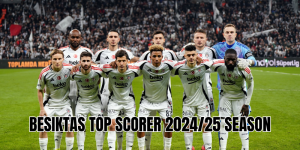When it comes to Atletico Madrid transfer record, the conversations always circle around two dramatic trajectories: the jaw-dropping price the club pays to bring in talent, and the staggering receipts when it sells its stars. In this article, AvigGoal will take you behind the scenes of Atleti’s most expensive deals — the purchases that bent the budget, the sales that reshaped the squad — and examine how those moves reflect the club’s identity, ambitions, and risks.
The Evolution of Atletico’s Transfer Spending

Atlético Madrid has traditionally been more cautious in the transfer market compared to its La Liga rivals, favoring savvy deals over headline-grabbing purchases. But in the past decade, as financial pressure and competitive demands intensified, the club has occasionally pushed the envelope. What once would have been considered extravagant deals are now part of Atleti’s financial DNA.
During Diego Simeone’s era, Atlético generally relied on smart scouting, shrewd contract management, and a tight wage structure. Yet even under that model, the club has seen record-breaking moments. These moments are often tied to turning points — such as a push to contend domestically, to match Real Madrid and Barcelona, or to maintain European ambitions.
Until very recently, Atlético’s transfer record for signings stood at a conspicuous peak, and every new large signing is measured against that benchmark. Meanwhile, sales of big names have been both a necessity and a gamble: revenue generation versus weakening the team.
Atlético’s Most Expensive Signings (Arrivals)
When we talk Atletico Madrid transfer record, the most referenced deals are on the incoming side — the splashes of cash that either delivered or disappointed. Here are the top arrivals in club history (figures in millions of euros):
| Rank | Player | From | Fee (approx.) | Season |
| 1 | João Félix | Benfica | €127.2m | 2019/20 |
| 2 | Julián Álvarez | Manchester City | €75.0m | 2024/25 |
| 3 | Thomas Lemar | Monaco | €72.0m | 2018/19 ermarkt]) |
| 4 | Diego Costa | Chelsea | €60.0m | 2017/18 |
| 5 | Antoine Griezmann | Real Sociedad | ~€54.0m | 2014/15 |
The crown jewel is clearly João Félix, whose €127.2 million move from Benfica remains Atletico’s all-time record signing. That colossal fee was both a statement of intent and a heavy bet on youth, potential, and hype. (Sadly, the returns on that investment have been widely debated.)
Right behind that, Julían Álvarez’s arrival, but also for what it signified: Atlético was willing to shell out big for proven talent, not just prospects. That move rapidly climbed into second place in Atleti’s record books.
Thomas Lemar’s acquisition for €72 million had already broken local ceilings in 2018, showing that the club was prepared to challenge the status quo. Before that, Diego Costa’s return and Griezmann’s move were considered massive moves relative to Atlético’s traditional spending levels.
Recent Arrivals
While these deals remain the marquee entries in Atlético’s history books, the summer 2025 window also saw some notable acquisitions — although none broke the all-time record:
- Álex Baena from Villarreal: ~€42.0m
- Davíd Hancko from Feyenoord: reported around €30m in press, though undisclosed officially ers.com])
- Johnny Cardoso, Giacomo Raspadori, Thiago Almada and others joined too, but at more moderate fees.
These signings are significant pieces in the evolving Atleti puzzle — they reflect a club still ambitious but also measured in its spending.
Atlético’s Biggest Sales (Departures)

On the flip side, Atlético have also set transfer record stories in the form of sales — deals that brought in revenue, but sometimes controversy. Below are Atleti’s largestgoing transfers:
| Rank | Player | To | Fee (approx.) |
| 1 | Antoine Griezmann | Barcelona | ~€120m+ (or top tier sale) |
| 2 | Lucas Hernández | Bayern Munich | (High tens of millions) |
| 3 | Rodri | Manchester City | sizable sum |
| 4 | João Félix | Chelsea (or others) | notable fee |
| 5 | Thomas Partey | Arsenal | significant sale |
Griezmann’s move ranks as one of the club’s biggest cash-ins — and it underscores how Atlético often build up a talent just to lose it to a richer club. Meanwhile, sales like Rodri and Lucas Hernández reflect the harsh realities: Atleti must sometimes sell to balance books or avoid stagnation.
How the Records Reflect Atlético’s Strategy
The Atletico Madrid transfer record narratives on both sides — buys and sells — reveal deeper strategic truths:
- Balance between ambition and caution
- Even as Atleti broke its record with Félix, it hasn’t chased endless spending. Many signings still come from mid-tier leagues or bargains. The big deals are exceptions, not the norm.
Youth, speculation, and resale value
- Many top buys are young players with upside (Félix, Álvarez, Lemar). The idea is that they can either deliver on the pitch and pay off if sold later. That’s part of Atleti’s financial model.
- Sales as necessity
- When Atlético sells big names, whether Griezmann or Rodri, it’s often because the offer is too good to refuse — or because the club needs capital. That tension between footballing ambition and financial realism is part of what defines Atlético in the modern era.
- Risk vs. reward
- Big transfers are always risky: performance, injury, adaptation, pressure — all are factors. Félix is often cited as emblematic of both the potential upside and the pitfalls of such gambles.
- Market evolution and inflation
- Nowadays, breaking the record is less surprising — as market values skyrocket, transfer records are more frequently challenged. Atleti must decide when to strike.
Challenges and Criticism Surrounding Atlético’s Records

With big fees come big expectations — and frequent criticism:
- Underperformance: Some headline signings failed to match the hype. Félix is often named in this context — expectations were sky-high.
- Squad balance: Splurging on a superstar can unbalance wages, depth, or harmony in a squad.
- Opportunity cost: The money spent on one star might have been used to shore up multiple areas (defense, midfield, backup) instead.
- Fan pressure: Supporters demand return on investment — goals, trophies, performances — and patience is often short.
These tensions highlight that transfer records are not just numbers — they are risks, bets, and reflections of identity.
What’s Next For Atlético’s Record Books?
So where does Atlético go from here? Can the Atletico Madrid transfer record be surpassed — and how?
- Álvarez’s ceiling: If Julio Álvarez succeeds, his fee already puts pressure on the Félix benchmark. A future move (if it happens) could shatter records in either direction.
- Strategic big pushes: Atlético may choose to break through the ceiling again, especially if chasing a La Liga title or dee.
- Market shifts: Inflation, external investment, and evolving valuations could make the next record feel less audacious.
- Selling power: If Atlético can develop more players who attract mega offers, their outgoing record books may be rewritten more often.
Conclusion
Atletico Madrid transfer record stories — both for arrivals and departures — are more than accountancy. They’re declarations of intent, moments of risk, and snapshots of a club straddling ambition and restraint. From João Félix’s massive arrival to Griezmann’s landmark sale, these deals shape the identity and trajectory of Atlético.
If you want the latest updates on Atlético’s record transfers, profiles of players pushing those limits, or forecasts for upcoming seasons, keep following AvigGoal. We’ll be right by your side, tracking every bid, every deal, and every legend in the making.







